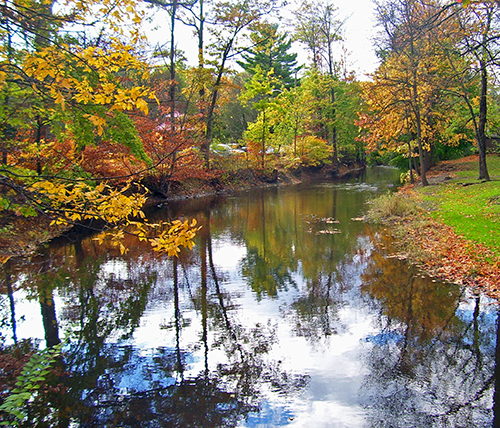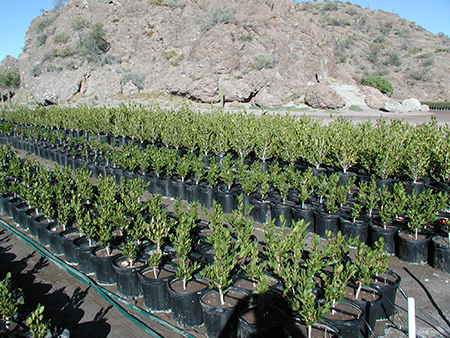Native Plant Conservation Campaign News: Support Budding for Native Plant Restoration and other Nature Based Solutions to Climate and Disasters.
April 15, 2019
NPCC has worked to educate the public and policymakers about the vital, but still underappreciated, Ecosystem Services produced by native plant communities. Conservation and restoration of native plant communities increases the supply of these invaluable Services that make human societies  safer, more prosperous and resilient.
safer, more prosperous and resilient.
 safer, more prosperous and resilient.
safer, more prosperous and resilient.Nature Based Solutions is a relatively new term meaning the use of natural ecosystems – and Ecosystem Services they produce - to address climate change, natural disasters and other threats to people and the planet. As climate change and other threats accelerate, the world community increasingly is embracing the conservation and restoration of native ecosystems as vital to an effective response.
In particular, forest restoration to absorb greenhouse gases is expanding all over the world. Mangroves, salt marshes, floodplains and other costal and interior wetlands are being conserved and restored to absorb floodwaters, reduce erosion and buffer hurricanes and severe storms. Native plant communities are being conserved and restored in watersheds around many urban areas to provide cheap, reliable water purification services (see links below for more details).
Already in 2019, a number of significant new reports and initiatives have been launched to expand and promote such Nature Based Solutions:
On March 1, the United Nations declared a decade of Ecosystem Restoration. They set a goal of restoring 350 million hectares of degraded land by 2030, leading to the production of $9 trillion in Ecosystem Services including the removal of up to 26 gigatons of greenhouse gases from the atmosphere. Read more in the March 6 NPCC News.
On April 10, the World Bank released Nature-based Solutions: a Cost-effective Approach for Disaster Risk and Water Resource Management. The report documents the Bank’s work to harness native plant communities, Nature Based Solutions and Ecosystem Services to address environmental hazards such as floods, landslides and water pollution.
A study published April 2 in the journal Nature once again confirmed that restoration and conservation of native forests and other plant communities has tremendous potential to absorb greenhouse gases. The authors also show that native forests are much more effective than plantations in combatting climate change.
The study examined proposals around the world to plant trees to remove CO2 from the atmosphere. Unfortunately, It found that almost half of the area pledged to new forests are to be commercial tree plantations. The article demonstrates that this approach is flawed, because plantations are not as effective CO2 repositories as conserved and restored native forests. For example, the authors note, plantations hold little more carbon, on average, than the land cleared to plant them. Further, plantations are periodically harvested, stopping CO2 absorption and creating logging slash which releases CO2 as it decomposes.
The authors also remind us that restoring native forests is not only relatively inexpensive but also has other benefits, such as protecting wildlife, stabilizing water quality and supply, reducing erosion, buffering local climates and creating jobs.
Learn More!
Read the study in the journal Nature: Restoring natural forests is the best way to remove atmospheric carbon
Read tthe press release for the United Nations Decade of Ecosystem Restoration
Read The World Bank Nature Based Solutions Report
 MORE NATURE BASED SOLUTIONS LINKS!
MORE NATURE BASED SOLUTIONS LINKS!Nature Based Solutions Initiative Oxford University
International Union for the Conservation of Nature (IUCN) Nature Based Solutions page
Nature Based Solutions to Disasters – from IUCN
Green solutions for Disaster Risk Reduction and climate change adaptation – from the United Nations
NOTE: Nature Based Solutions generate many invaluable Ecosystem Services in addition to climate mitigation, water purification and disaster risk reduction. Learn more about Ecosystem Services at the NEW ECOSYSTEM SERVICES SECTION OF THE NPCC WEBSITE. It offers tools and information to help understand ecosystem services such as:
We hope that these resources will be useful in persuading elected officials, the media and the pubic that we should conserve native plants and use Nature Based Solutions to SAVE PLANTS, SAVE THE PLANET and SAVE OURSELVES.
Photos:
Protected Watersheds in Catskill Mountains protect water quality for 9 million New Yorkers (c) public domain
Mangrove restoration in Mexico (c) Emily B. Roberson